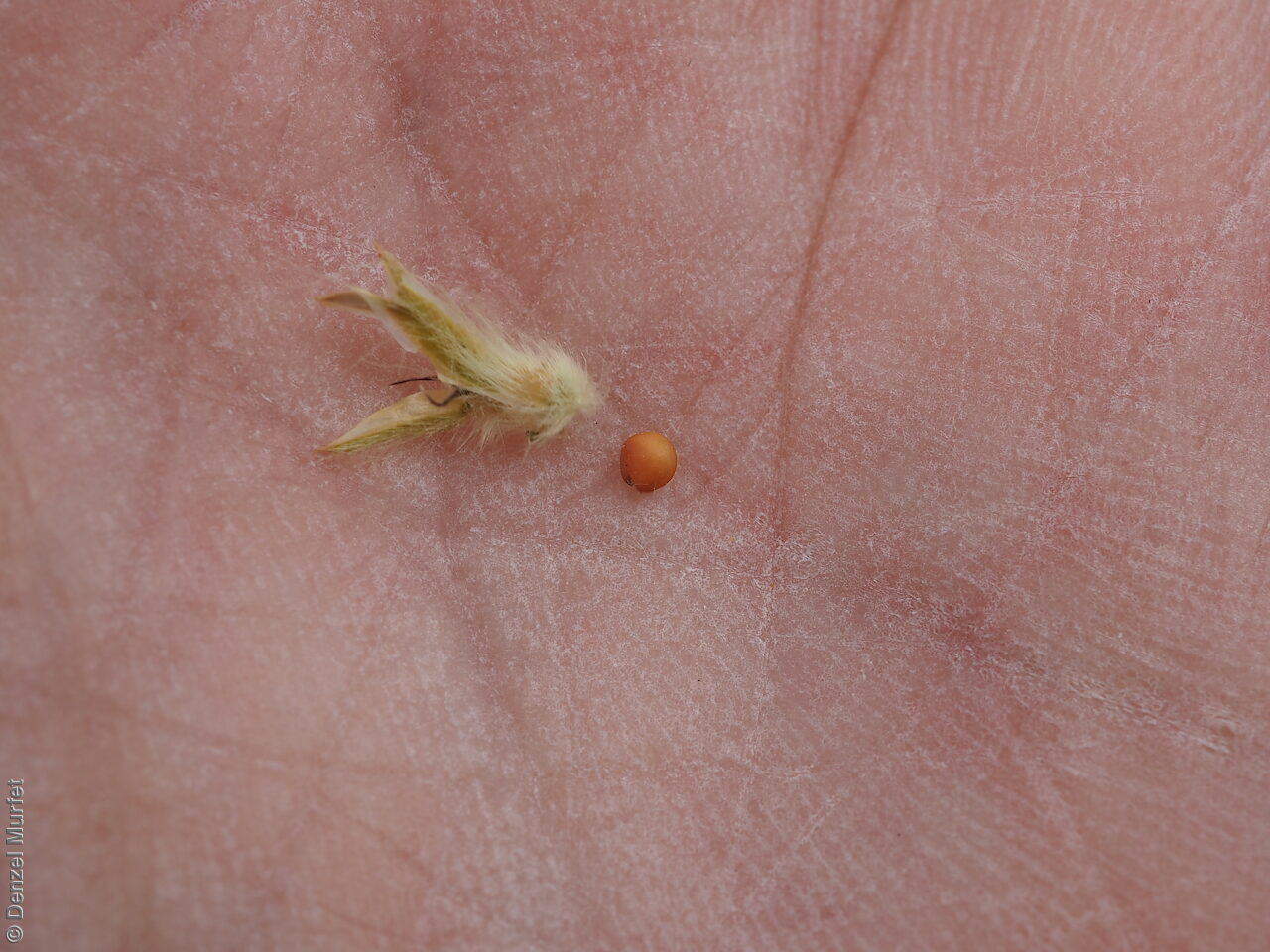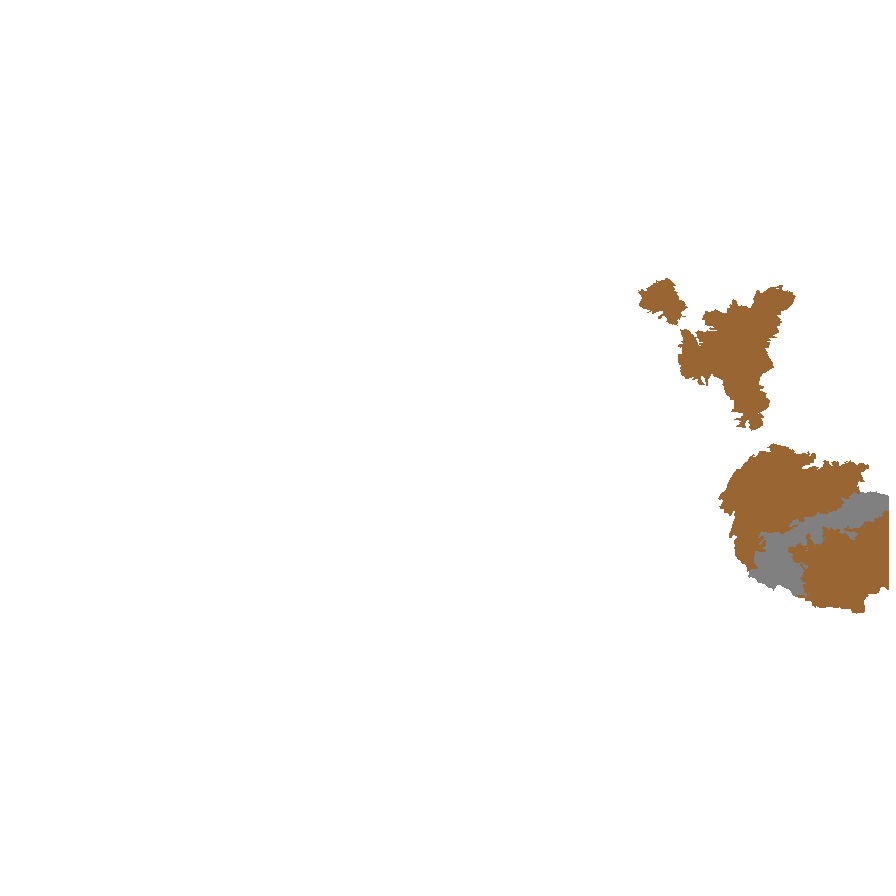













Prior names
Ptilotus gaudichaudii ssp. parviflorus
Hemisteirus psilotrichoides
Ptilotus gaudichaudii var. parviflorus
Trichinium corymbosum var. parviflorum
Ptilotus hemisteirus, nom.illeg., based on Hemisteirus
Common names
Yellow Mulla Mulla
Small Paper Fox-tail
Small Yellow Ptilotus
Etymology
Ptilotus from the Greek 'ptilotos' meaning feathered or winged; referring to the hairy flowers. Modestus means mild or modest but unsure what this is referring to (formally P. gaudichaudii var. parviflorus from Gaudichaudii named after Charles Gaudichaud-Beaupre (1789-1854), a French botanist who sailed on Freycinet expedition (1817-20) to Australia and named a few Australian genus. Parviflorus from the Latin 'parvus' meaning small and 'floris' meaning flower.
Distribution and status
Found on the eastern side of South Australia, growing on flats or low rises in red sand, loam or clayloam, sometimes with stones or gravel particles, growing in open eucalypt and mulga (Acacia aneura) woodland or shrubland, grassland or herbfields. Also found in Queensland and New South Wales. Native. Uncommon in South Australia. Common in the other states.
Herbarium regions: Flinders Ranges, Eastern, Murray
NRM regions: South Australian Arid Lands, South Australian Murray-Darling Basin
AVH map: SA distribution map (external link)
Plant description
Erect herbs to 70 cm high with stems and leaves sparsely hairy. Leaves narrowly obovate or narrowly elliptic, rarely subspathulate or ovate, basal leaves usually withered and senescent by anthesis, to 65 mm long and 8 mm wide, stem leaves to 47 mm long and 5 mm wide. Inflorescences terminal, globose, shortly cylindrical, or hemispherical to 2 cm long with 35 yellow flowers, with hairs at base. Flowering between August and October. This subspecies is distinguish from the other subspecies found in South Australia by having perianth 7.5-9 mm long and style 4.5-5 mm long while P. gaudichaudii ssp. gaudichaudii has perianth 10-15 mm long and style 7-10.5 mm long. Fruits are yellow-brown globular or cylindrical head containing numerous long papery and hairy fruits, each containing one seed. Seeds are orange-brown reniform seed to 1.5 mm long and 1 mm long. Seed embryo type is peripheral.
Seed collection and propagation
Collect seeds between August and December. Be very careful when collecting this species as the fruits contain fine hairs that may cause an allergic reaction for some people. Collect the fruit heads when dried to a pale straw colour. Each fruit should come off the head easily when fingers are rubbed up the stem. Collect more fruits than required as not all fruits will have a viable seed. Be very careful when cleaning this species as the fruits contain fine hairs that may cause an allergic reaction for some people. To clean, rub the fruit heads gently to dislodge the seed at the base of each fruit. Use a sieve to separate the unwanted material. Store the seeds with a desiccant such as dried silica beads or dry rice, in an air tight container in a cool and dry place. Seed viability is usually high but seed availability tend to be low. Seeds are non-dormant, viable seed should germinate readily.
| Location | No. of seeds (weight grams) | Number of plants | Date collected | Collection number Collection location | Date stored | % Viability | Storage temperature |
|---|---|---|---|---|---|---|---|
| BGA | 830 (2.61 g) | 50+ | 20-Aug-2010 | KHB462 Flinders Ranges | 1-Jan-2012 | 80% | -18°C |
Number of plants: This is the number of plants from which the seeds were collected.
Collection location: The Herbarium of South Australia's region name.
% Viability: Percentage of filled healthy seeds determined by a cut test or x-ray.